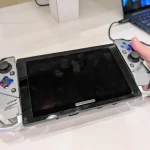Julia Weaver
- Julia Weaver is a preschool teacher in Ohio who has been teaching her students virtually during the pandemic.
- She teaches a group of 17 preschoolers through a mix of live Zoom calls and pre-recorded lessons uploaded to a Google Drive.
- Keeping her 3-year-old students’ attention spans engaged has been a challenge; so has staying flexible for their parents’ work schedules.
- The experience has made her a better, more creative teacher — and she encourages parents to give themselves grace during this tough time.
- This is her story, as told to freelance writer Sarah Bence.
- Visit Business Insider’s homepage for more stories.
This is my third year teaching, and it’s safe to say that it isn’t anything like I expected. I’m a preschool teacher in Ohio, and I love my job.
My job totally changed back in March, when we switched to virtual teaching due to the pandemic. I’m still teaching virtually this fall, but it’s very different than it was in the spring.
Virtual teaching in the spring was honestly very trial and error. We didn’t do any live lessons, we just sent videos or activity ideas to the parents. It felt like a very temporary solution.
When my school announced it was taking a hybrid format this fall, I volunteered to teach virtually.
Up until the first week of school this fall, I expected to be back teaching in-person with my co-teacher. However, when it was announced that my school would be offering classes remotely and in-person, I decided to give virtual teaching another shot.
I thought I might enjoy finding new ways to teach my preschoolers over video and online — in a more involved way than we did in the spring. Mainly, I didn’t want those families who weren’t comfortable sending their children in-person to miss out on the typical preschool experience. It’s my goal to make my virtual teaching as close to what it would be like in the classroom as possible.
Last year I co-taught because the Department of Education requires a second adult if there are more than nine toddler-aged kids in a classroom. It’s also a great model of teaching.
But with virtual teaching, that rule didn’t apply. I now teach a classroom of 17 3-year-olds over Zoom.
My typical day as a preschool teacher has definitely changed.
I wake up at about 7 a.m., feed my dog, and get ready for work. Even though I’m teaching virtually, I still do all my work from the preschool building. Teaching from the school building is mandatory for all of the virtual teachers. I arrive there around 8:30 a.m. to start my day, and classes start at 9 a.m.
My teaching format is a mix of live and recorded lessons.
Julia Weaver
I do at least one live call a day, usually a Zoom call first thing in the morning. The rest of the lessons are pre-recorded. My school arranged virtual teaching this way so that parents could do lessons on their own time.
According to some child development experts, kids’ sustained attention span is anywhere from two to five minutes for each year of their lives. For 3-year-olds, that means 15 minutes is the maximum amount of time I can expect them to pay attention to any one task.
But I’ve found that 15 minutes of Zooming isn’t the same as 15 minutes in a classroom. It’s very difficult for 3-year-olds to sit in front of a computer screen for that long doing the same activity.
Instead of using the live call to teach a specific lesson, I’ve made it the first thing we do each morning to check in and say hello. Our Zoom call is 30 minutes, but I pack four to five different activities into that time to keep the kids engaged.
I try to run the Zoom call exactly how “circle time” would be in the classroom.
Julia Weaver
It really helps the kids to have a set routine. They need structure, and this may only be half an hour of their day, but it helps.
We start with a little good morning song about trains, which they love since they each get to sing their own part of the song. Usually the parents are not on the video screen, but sit right next to their kid. When they hear their child’s name, they press un-mute and their child sings their part, then they mute again.
Each kid also has a moment to share about their favorite color or animal. Usually we also have a short math game, and that’s it.
One of my students is a pro with Zoom, so he does it by himself. A few parents will get their child started with our call and then walk away. Overall, though, I’d say about 80% of the kids I teach have a parent with them to help mute and un-mute.
Read more: 5 childcare and early education startups leading the pack in the shift to virtual and pod learning
I stress to the parents that the Zoom call isn’t required.
Julia Weaver
The live call is just a way for us to see each other and connect.
Out of my 17 students, I’d say in September I had about 12-15 kids coming to each Zoom call. Now, in October, it’s more like 9-10. I’m not entirely sure on the reason for kids not coming to Zooms. It could be that the parent is busy or working, or the child doesn’t do well with the live calls, so they skip it.
There was a huge learning curve with talking to 17 3-year-olds over Zoom.
3-year-olds, obviously, tend to talk over each other, and that’s a big issue on Zoom. There was so much troubleshooting with this the first couple weeks this school year.
But I’ve taught the kids, just like I would in the classroom, to raise their hand. Now, they know to raise their hand and I’ll unmute them. Sometimes, all they want to say is something like, “Oh, I have a unicorn and his name is Pinky!” And I say, “That’s cool. We’re talking about the weather, but OK!”
We talk about how we listen to each other on the computer.
Julia Weaver
I tell them: Listening means your eyes are looking at the person who’s talking. Your ears are listening. Your brain is thinking, and your mouth is quiet if it’s not your turn. We practice this every single day.
I do get nervous for the Zoom calls, largely because the parents are watching right next to the kids.
Back when I taught in the classroom, before the pandemic, it was just me and my co-teacher and the kids.
These Zoom calls can feel really performative because I know the parents are watching. It almost feels like I’m on stage. Over time, though, as we’ve developed a routine, I’ve gotten more comfortable with the live calls.
After the live call, I plan and record for the next day.
I always record one day ahead. While I’m doing that, the families are at home doing what I’ve put in the Google Drive folder.
Each day I record about six videos and activities. This includes things like reading a book, activities they can do at home like writing their name or rhyming words, and a phonics video.
Julia Weaver
When I’m not recording, I’m either planning activities for the next day or making a million copies.
We provide take home kits each week for the families to pick up on Fridays at the school. These have all the materials needed for the next week’s lessons.
If there’s a craft, I’ll include a printout and anything like pipe cleaners or beads that they might need. It takes a long time to assemble those kits for all 17 kids.
This also means I have to plan a week ahead, and there’s not much flexibility if I want to change or add something to the lesson plan. I can’t do that, because the kits have set materials at home.
Julia Weaver
I used to spend a lot of time playing or interacting with the kids. Now I spend that time in front of the printer.
Virtual teaching this year is honestly pretty lonely. I am teaching from the school’s music studio, from back when we offered music classes pre-pandemic.
It’s a tiny little room. All my decorations, books, and stuffed animals are here but I’m pretty much alone in that room from 8:30 a.m. to 12:30 p.m. I miss interacting with the kids, especially the simple moments like sitting and coloring with them.
Julia Weaver
Virtual preschool is only a half-day, so the rest of the day I cover and give breaks to my coworkers who are teaching in-person.
I usually cover for the same teacher and classroom each day, to reduce any potential “cross contamination” risk with COVID-19.
Keeping the kids apart is the hardest part. The kids are so good about wearing their masks, though. Honestly, my 3-year-olds are better about wearing their masks than most adults.
Julia Weaver
I actually prefer some things about virtual teaching.
I’ve noticed I’m not completely drained of energy by the end of the day. Overall, the job isn’t as physically taxing anymore, which means I have more energy when I go home.
I’m also not dealing with any behavior problems, which is one of the most challenging aspects of teaching, apart from the 30 or 40 minutes on our morning Zoom call.
Julia Weaver
There are still challenges. Across the country, teachers are quitting in droves. I’ve seen in Facebook groups that for a lot of teachers, the challenges of this year have made them consider retiring or just giving in their two weeks’ notice.
That’s not the case for me. Don’t get me wrong, I’m desperately hoping next year I can be fully in the classroom with my co-teacher and the kids. But I think virtual teaching has challenged me to be more creative, and has made me a better teacher.
Julia Weaver
For any other teachers struggling to teach virtually, be gentle on yourself.
Don’t think that you’re going to get through all of your to do list, because you won’t. But that’s okay. You need to have realistic expectations for yourself and your students. As long as your students feel supported by you, then you’re being successful as a teacher.
I would extend that to parents, too. Give your kids grace, give their teachers grace, and give yourself grace during this time.
Powered by WPeMatico






